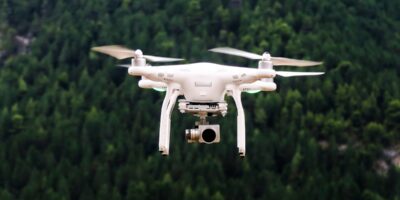Understanding Squawk 7500 in Aviation
In aviation, communication between pilots and air traffic control (ATC) is crucial. One such method of communication occurs via a device called a transponder. Pilots use transponders to relay important information to ATC, allowing for seamless monitoring of aircraft throughout their flight paths.

The Role of the Transponder
A transponder is an electronic device used in aircraft. It communicates with radar systems on the ground. By responding to a radar signal, it provides controllers with vital information, such as the aircraft’s ID and altitude.
This system enhances both safety and efficiency in the skies. Transponders use specific codes to convey different information to ATC. These codes are known as “squawk codes.”
What Squawk 7500 Means
Squawk 7500 has a critical and specific significance. It’s an internationally recognized squawk code used by pilots to indicate that the aircraft is being hijacked.
Whenever this code is transmitted, it immediately triggers a security protocol. Authorities identify the situation as a potential hijacking. In response, security measures are put into place to manage and resolve the crisis effectively and efficiently.
Contextual History of Squawk Codes
The squawk code system emerged as a method to enhance aviation security and safety. Initially creating simpler passage through controlled airspace, squawk codes evolved to serve additional purposes. The system assigns various numerical codes to represent different situations.
Squawk 7700, for example, signifies general emergency, while Squawk 7600 indicates radio failure. Among these, Squawk 7500 stands out due to its association with hijack situations.
Operational Protocols for Squawk 7500
Training prepares pilots to handle emergency codes like squawk 7500. While routine communications with ATC happen through voice transmissions, under duress, transponders streamline this communication.
Pilots must exercise caution when engaging this code. Once activated, it remains a priority until verified and resolved by authorities. It’s a silent alert, a deliberate mechanism to avoid panic both inside and outside the aircraft.
Air Traffic Control’s Response
Upon receiving a squawk 7500 code, ATC reacts promptly. Immediate checks are conducted, contact attempts are made with the cockpit, and security protocols align rapidly.
Coordination with law enforcement becomes paramount. Ground support, including potential military intervention, is orchestrated to ensure containment and control of the aircraft and its surroundings.
Security Implications and Preparedness
The squawk 7500 protocol underlies broader aviation security frameworks. These include checks, regulations, and preparedness strategies to preempt potential hijackings. It highlights the importance of training, technology, and coordination.
Ongoing revisions and enhancements of security standards are necessary. These ensure the aviation community remains resilient against evolving threats.
Case Studies and Real-World Instances
- Historical incidents have documented the use of squawk 7500. Analyzing these provides insights into both failures and successes.
- Reviewing cases helps in understanding the role of quick thinking and established protocols in managing emergencies.
- Lessons from past situations guide future protocol development, ensuring continuous improvement.
Challenges in Implementation
Despite its critical role, implementing squawk 7500 procedures faces challenges. Miscommunications can occur both within the cockpit and with ATC. Distinguishing hijack alerts from other potential emergencies requires clarity and swift action.
Technological limitations, human errors, and atmospheric conditions can exacerbate these challenges. Consequently, training and simulations are essential to familiarize pilots and controllers with potential scenarios.
Future of Transponder Technology
Technological advancements will continue to transform transponder capabilities. Enhanced data transmission, improved reliability, and integration with satellite systems represent ongoing developments.
Innovations in artificial intelligence and machine learning may further refine alert procedures. This creates the potential for even more efficient communication and safety measures.
Global Coordination and Standardization
International agreements govern squawk 7500 protocols. Coordinated efforts ensure uniformity in responses, avoiding confusion across different jurisdictions.
Global aviation bodies work to develop best practices, facilitating harmonized security approaches. This global network supports preparedness against aerial threats, fostering safer skies for everyone.




Subscribe for Updates
Get the latest articles delivered to your inbox.
We respect your privacy. Unsubscribe anytime.